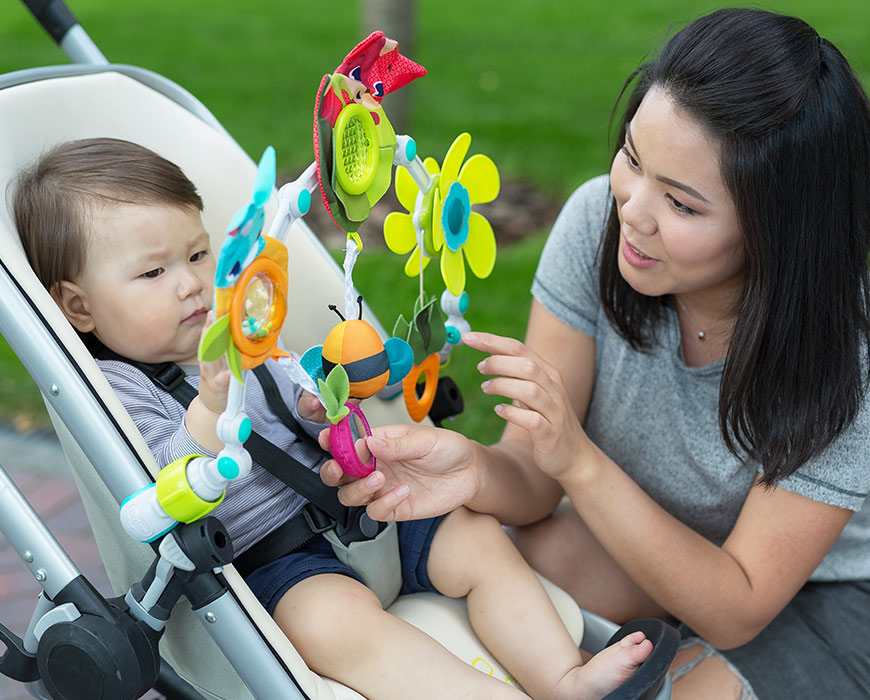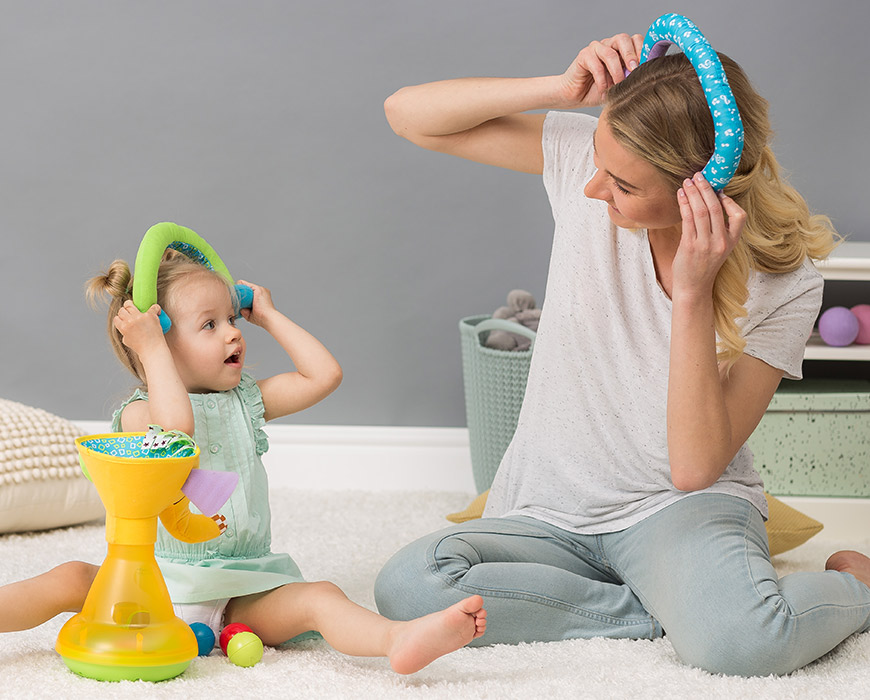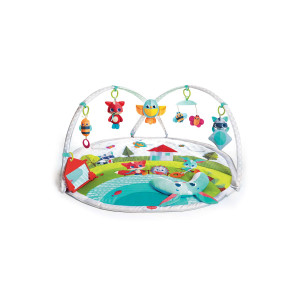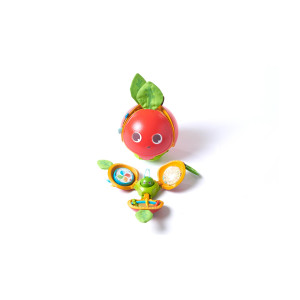Learning a Language: A Partnership between Babies and Parents
Babies tend to babble more when adults are around. Many months before uttering syllables or words, they are able to sustain “conversations” with adults for a number of turns. In these conversations both partners get their turn. The baby often imitates the sounds that the adult produces and the adult often imitates sounds that the baby is making.
When talking to your baby try to use natural, grammatically correct language. It is important to use sentences and not to simply label objects. Babies have this amazing skill of segmenting sentences that they hear, and this skill helps them build up their future language.
Learning language is a task that is greatly facilitated by partnership with parents (or other adult caretakers), who are sensitive to the child's intentions and responsive to the baby's signals. When parents verbally respond to children's actions they ease the “word-to-world” mapping that is necessary for learning new words. For example, when a 10-18-month-old toddler looks at an unfamiliar picture of a dog and the parent says: “Here is a little doggie” "The doggie is barking", the toddler pairs the word “doggie” with the most salient object in the picture, and learns that “doggie” refers not only to real dogs or toy dogs but also to pictures of dogs. In other words, the association of the same word with different objects and pictures (variety of referents) creates the category [DOG] in the baby’s mind.
Parents who couple their language with gestures and other cues to word meanings (e.g., showing an object or a picture) speed up their children’s rate of learning new words. Parents who use rich language that includes a variety of verbs, adjectives, and adverbs (For example, "see how fast this fish is swimming", "a baby elephant is coming", "The monkey is climbing the tree"), expand the ideas that their baby maintains and facilitate their child’s acquisition of grammar.
Parents who are sensitive to children's focus of interest encourage children to respond to them. Shared storytelling, where both parents and children describe pictures, is one example of an ongoing process that helps gradually gain emotional, social, cognitive and linguistic experiences. It is highly recommended that caregivers try to tell children stories in their own words and in a slightly different way each time. Such a strategy increases the listening skills of the babies and their motivation to learn new linguistic forms. Thus, for example, when describing the same scene in the story of the “The Three Bears”, parents may say: "The Bears’ house was empty/The Bears went on a walk/The Bears are walking in the forest/The Bears aren't at home/”. Or, when describing a picture of a dog chasing a cat, parents can say: “The cat is running away/The cat is afraid / It is escaping/Dogs don’t like cats/ The dog is following the cat/”.
To sum up, rich input by caregivers predicts vocabulary growth and future learning skills of children. By talking with their baby throughout the first two years of life, parents provide vital information that advances emotional bonding, social bidirectional skills, cognitive abilities and language learning.
Prof. Esther Dromi is an expert in language development and language disorders in children (Constatiner School of Education, Tel Aviv University)
Click here to watch our special Under the Sea Gymini animated video to give you some storytelling ideas.
References:
Dromi, E. Early lexical development. London: Cambridge University Press, 1987.
Dromi, E. Babbling and early words . In Salkind, N.J.& Margolis, L. Child Development Volume 1 of the Macmillan Psychology Reference Series. NY: USA. Pp. 45-47, 2002.
Hirsh-Pasek, K., & Golinkof, R.M. The origins of grammar: Evidence from early language comprehension. Cambridge, MA: MIT Press, 1996.
Kuhl, P. K., Conboy, B. T., Coffey-Corina, S., Padden, D., Rivera-Gaxiola, M., & Nelson, T. Phonetic learning as a pathway to language: New data and native language magnet theory expanded (NLM-e). Philosophical Transactions of the Royal Society of London .Series B, Biological sciences, 363(1493), 979-1000, 2008.
Papousek, M., & Papousek, H. Form and function of vocal matching in interactions between mothers and thier precanonical infants. First Language, 9, 137-158, 1989.
Schlesinger, I. M. Steps to language. Hillsdale, NJ: Lawrence Erlbaum. 1982.
Spence, M.J., & M.S, Freeman. Newborn infants prefer the maternal low-pass filtered voice, but not the maternal whispered voice. Infant Behavior and Development, 19(2) 199-2-12. 1996.
Jusczyk, P. W. The Discovery of Spoken Language. Cambridge, MA: MIT Press, 1997.
























 English - International
English - International French - France
French - France Spanish
Spanish German
German Portuguese
Portuguese English - USA
English - USA English - UK
English - UK Russian
Russian Japanese - Japan
Japanese - Japan Portuguese - Portugal
Portuguese - Portugal Polish - Poland
Polish - Poland





